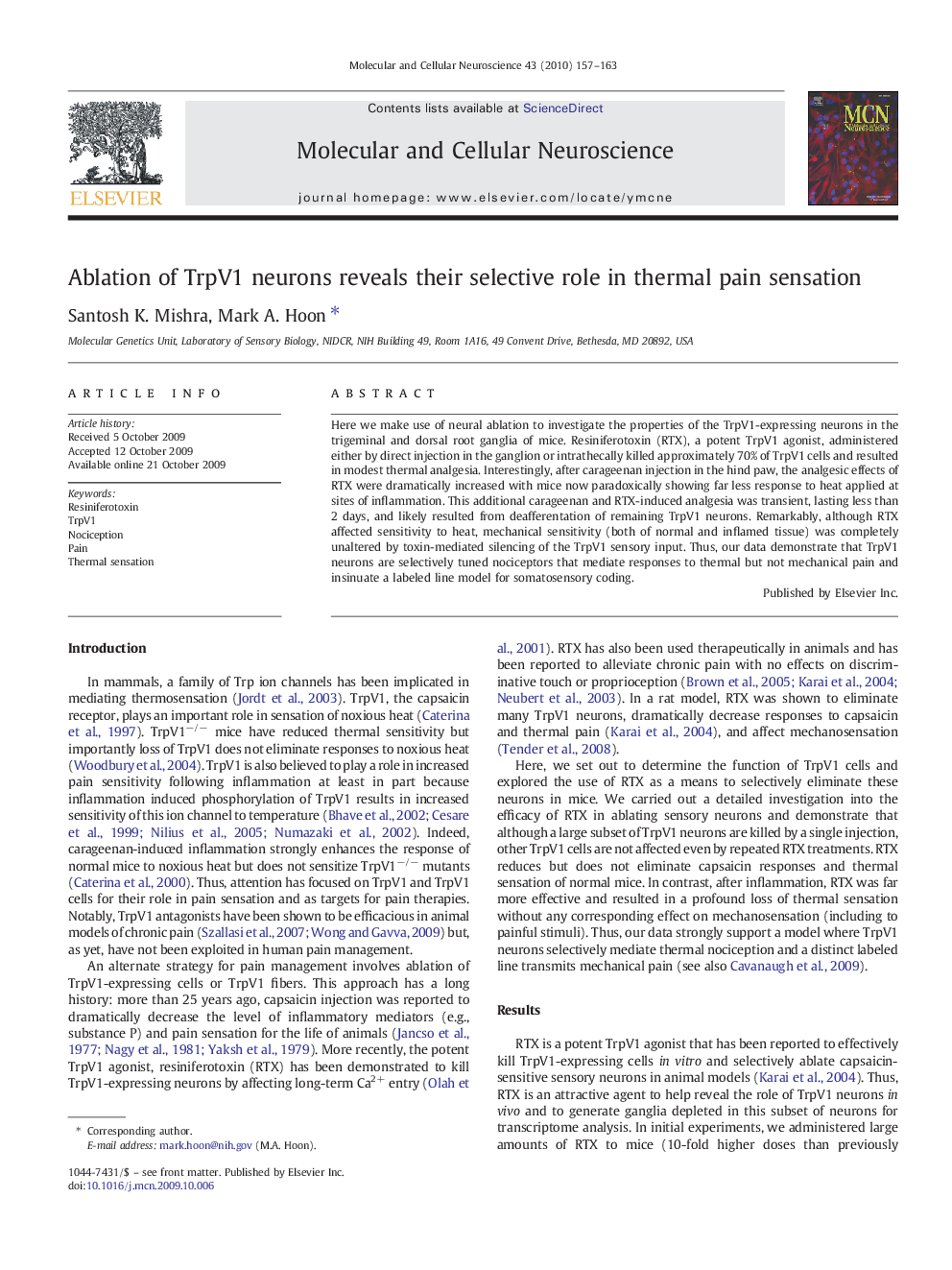| Article ID | Journal | Published Year | Pages | File Type |
|---|---|---|---|---|
| 2198910 | Molecular and Cellular Neuroscience | 2010 | 7 Pages |
Here we make use of neural ablation to investigate the properties of the TrpV1-expressing neurons in the trigeminal and dorsal root ganglia of mice. Resiniferotoxin (RTX), a potent TrpV1 agonist, administered either by direct injection in the ganglion or intrathecally killed approximately 70% of TrpV1 cells and resulted in modest thermal analgesia. Interestingly, after carageenan injection in the hind paw, the analgesic effects of RTX were dramatically increased with mice now paradoxically showing far less response to heat applied at sites of inflammation. This additional carageenan and RTX-induced analgesia was transient, lasting less than 2 days, and likely resulted from deafferentation of remaining TrpV1 neurons. Remarkably, although RTX affected sensitivity to heat, mechanical sensitivity (both of normal and inflamed tissue) was completely unaltered by toxin-mediated silencing of the TrpV1 sensory input. Thus, our data demonstrate that TrpV1 neurons are selectively tuned nociceptors that mediate responses to thermal but not mechanical pain and insinuate a labeled line model for somatosensory coding.
